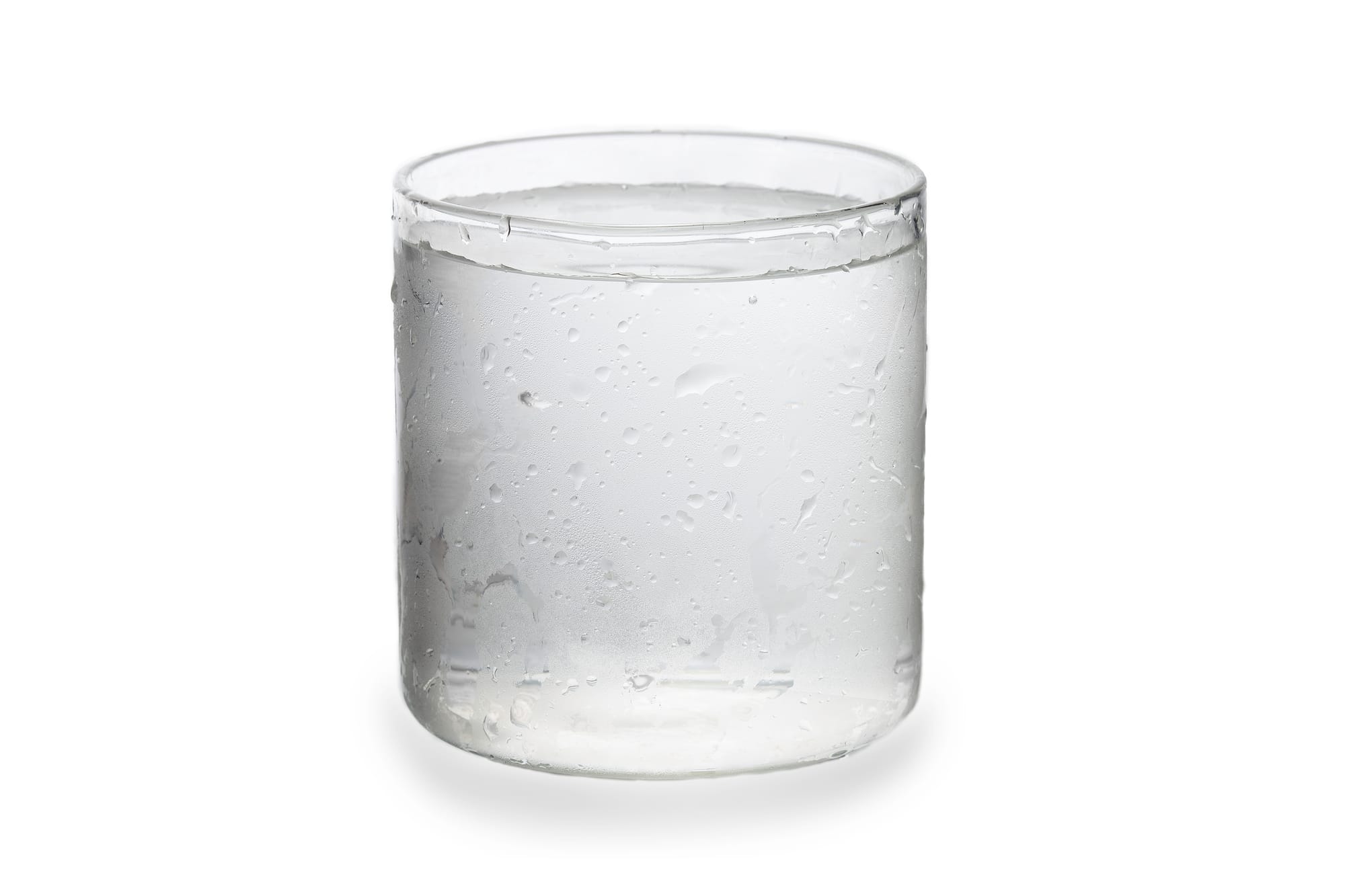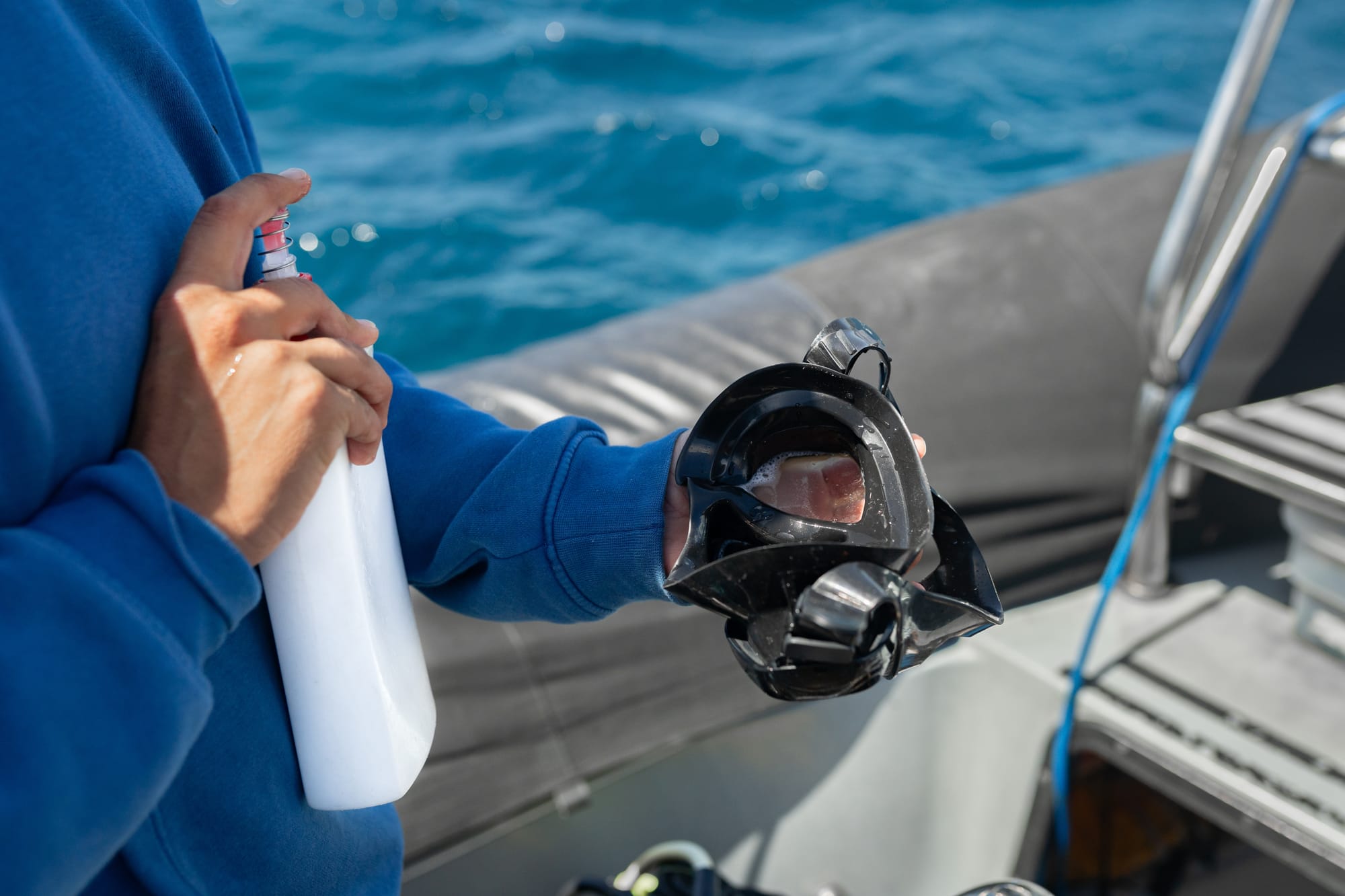How can I prevent my mask from fogging up? Full explanation

If you're a diver (new or experienced), you very likely have experienced the following scenario: You get ready for a dive, happy to go in the water, and when the time arrives, and you're ready to descend, your mask starts to fog. You haven't even been a minute in the water, but you know that the rest of the dive will be frustrating!
Thankfully, having a mask that doesn't fog up doesn't have to be a gamble: After this article, you will be able to know not only why your mask fogs up but how to prevent it, and what to do before and during a dive to reduce it from happening as much as possible!
If you are looking for a full guide to know more about masks and which mask would be the best for you, check out this article.
Table of Contents
Why does my mask fog up?
First of all, it's completely normal for a mask to fog up! You're not the first person it happened to, and you won't be the last! But, to understand how to prevent it, we must first understand where the phenomenon comes from.
To explain, let's use a comparison: imagine you pour yourself a cold glass of water, the water is colder than the glass and the outer environment. You would expect the glass to start forming some condensation, just as shown below:

This happens because of the difference in temperature: the cold water cools the glass, which in turn cools down the moisture in the ambient atmosphere and causes it to form droplets and appear as "fog" on the glass. In diving masks, the same phenomenon appears: the outer environment (water), which is usually cooler, forces the moisture in the air inside the mask to form droplets on the lens, and this appears as fog. Other factors come into play, such as the humidity of the air inside the mask.
When exhaling, it can feel more natural for certain divers to exhale through the nose: doing this might actually make the mask fog up significantly more. This is due to the higher temperature and humidity of the air you exhale!
Another reason why the fog keeps coming back is that there might be a thin layer of residue or silicon film deposit on the lens, which can occur either if the mask is new or if it hasn't been treated for a long time.
Now that you know where fog comes from, let's have a look at the actionable steps we can take to reduce it!
What you can do before the dive
Let's start with the things you can do to pre-treat your mask before the dive even starts. If you bought a new mask or haven't treated it for a long time, it is possible that there is a layer of silicone or oil/grease residue on the lens. This layer will prevent water vapor from spreading out evenly on the surface and force it into tiny droplets, creating fog.
Scrubbing the lens with Toothpaste will help with reducing fog: although it doesn't directly prevent the formation of water droplets, using it to clean the lens will remove the film/residue on the lens, allowing water condensation to spread more evenly, and anti-fog to work better. Toothpaste works as an abrasive, so you need to be gentle using it: use a soft toothbrush, put some toothpaste on it, and gently scrub your lens. Avoid being too rough!
Burning the lens is another way of removing this film: you can use a lighter to burn the residue on the lens. You should only use that on tempered glass lenses. If the lens is made of plastic, do not try to burn it, as it will melt! Ideally, ask for help from an experienced instructor to burn your mask to prevent accidentally damaging it.
Applying anti-fog in the mask will help prevent fogging: anti-fog acts as a surfactant, reducing the surface tension of water and reducing droplet formation, therefore reducing fog. If you want to be careful about your environmental impact, make sure to look for an eco-friendly anti-fog solution! Applying baby shampoo/soap as an alternative to the anti-fog solution works as well! Make sure you rinse the mask before starting the dive if you do use soap, as having a very soapy mask might sting your eyes!

Spitting in the mask is a cost-effective way of preventing fog. Spit, like most anti-fog solutions, acts as a surfactant! The proper way to do it is to spit in the mask, rub it gently on the lens, before rinsing with water. Once you have rinsed the lens, do not rub it more with your fingers as you risk making the lens dirty again.
During the dive
Now that you have done all you could to prevent the mask from fogging up before the dive, let's have a look at what you can do during the dive!
Avoid exhaling through the nose. As I mentioned before, the air we exhale is more humid and warmer. The greater temperature difference and increased humidity make the exhaled air more prone to fog up. To prevent excessive fogging, try to actively think about exhaling through your mouth!
How to remove fog during the dive? It can happen that even with all the previous precautions taken, you will see a little bit of fog forming on your mask. If that is the case, there is an easy way to clean it while underwater: you will have to lightly flood the mask, and then use the water to clear the fog by tilting your head down. Then, clear the mask of the water using the method you learned during your open-water training. Avoid excessively flooding your mask, as that might increase moisture in your mask!
FAQ
Q: Is it safe to burn my mask?
A: Burning the lens of your mask to prevent fog is safe if done properly. You should only use a lighter to burn tempered glass lenses, not plastic lenses.
Q: What is a good substitute for anti-fog?
A: Anti-fog solution works by reducing the surface tension of water and preventing the formation of tiny droplets. Applying baby shampoo/soap in the mask before rinsing can be a substitute for an anti-fog solution. Spitting in the mask (and then rinsing!) is another option.
Q: Do full-face masks fog up?
A: Full-face masks can fog up just like regular masks do. The quality of the mask may impact the extent of the fog. To learn how to treat a full-face mask differently from a regular mask, the best resource is to ask your local full-face mask diving instructor!
Q: Do I need to treat my new mask?
A: New masks very often (if not always) have a thin layer of silicone deposit on their lens, which makes them fog up significantly more. Therefore, new masks have to be treated by either burning the lens with a lighter to remove this layer or by using toothpaste and a toothbrush to scrub it out. Sometimes, new masks have to go through this process multiple times to really stop the fogging!
